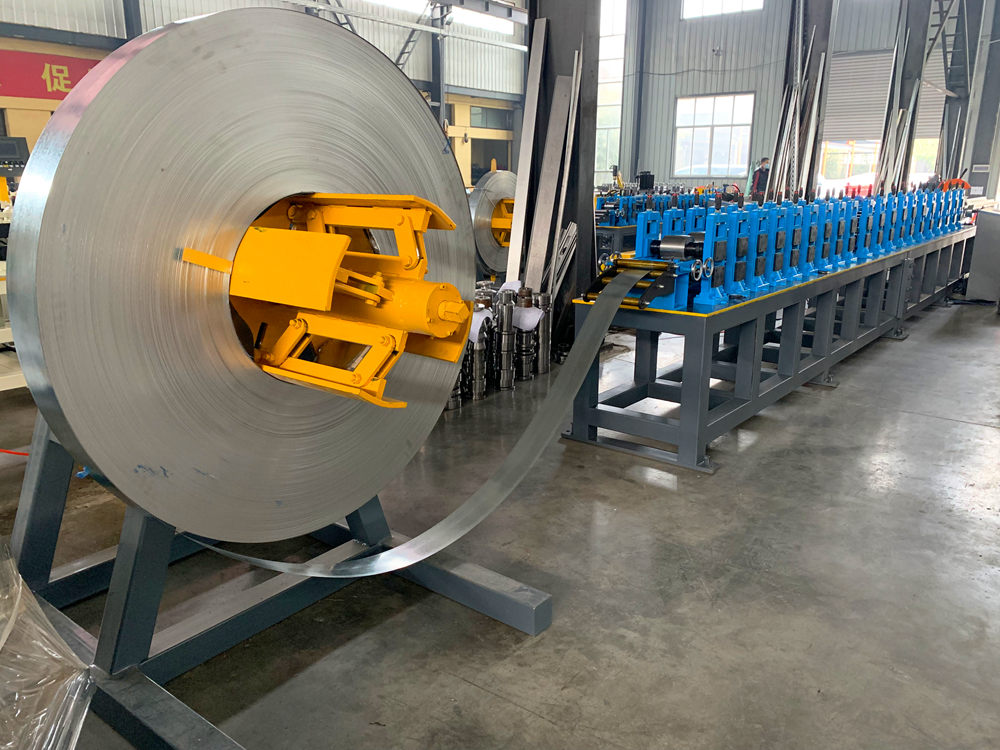
The Innovation of Shutter Roll Forming Machines
In the world of manufacturing, efficiency and precision are paramount. One innovation that has significantly transformed the way metal products are produced is the shutter roll forming machine. These machines are designed to create high-quality metal shutters and profiles with impeccable consistency and speed. As industries continue to evolve, the importance of such technology becomes increasingly crucial.
Shutter roll forming machines utilize a continuous process to shape metal sheets into desired profiles. The process begins with a flat metal coil, which is fed through a series of rollers. Each roller is meticulously designed to progressively form the metal into its final shape. This continuous operation not only streamlines production but also reduces labor costs and waste associated with traditional manufacturing methods.
One of the most significant advantages of using a shutter roll forming machine is the superior quality of the finished product. Unlike traditional methods that may involve welding or additional assembly, roll forming produces solid, uniform profiles in one seamless process. This manufacturing technique ensures that the shutters maintain their structural integrity and durability, which are essential for security applications. Given that metal shutters are often used for industrial and commercial buildings, having a reliable product is critical.
Moreover, the versatility of shutter roll forming machines cannot be overlooked. These machines can easily be adjusted to manufacture a variety of profiles and sizes. For manufacturers, this flexibility means that they can cater to diverse customer demands without the need for multiple machines or complicated setup processes. Whether it’s for storefronts, warehouses, or industrial facilities, the machine can be adapted to create the specific shutter designs required.

An additional benefit is the speed of production. Shutter roll forming machines can operate at high speeds, producing large quantities of product in a fraction of the time other methods would require. This efficiency benefits businesses as they can meet market demands quickly, reducing lead times and enhancing customer satisfaction. In a competitive landscape where time-to-market can significantly influence success, having a machine that facilitates rapid production is a massive advantage.
Moreover, these machines are designed with advanced technology, incorporating features such as automated controls and integrated cutting systems. These innovations enhance precision and reduce the likelihood of errors during production. With modern shutter roll forming machines, manufacturers can also enjoy better monitoring and control over the production process, leading to improved quality assurance.
In terms of economics, investing in a shutter roll forming machine can yield substantial returns. Although the initial cost may be significant, the long-term savings in labor, material waste, and production time can outweigh these expenses. Additionally, producing high-demand products can open new revenue streams for manufacturers, further justifying the investment.
As the construction and manufacturing industries continue to progress, the need for efficient, reliable, and high-quality production methods grows. Shutter roll forming machines represent a significant leap forward in this regard. They not only provide the means to produce robust metal shutters swiftly and economically but also support sustainability efforts by minimizing waste and maximizing the use of raw materials.
In conclusion, shutter roll forming machines stand at the forefront of modern manufacturing. Their ability to create high-quality products efficiently positions them as essential tools in meeting the demands of today’s market. As industries increasingly prioritize innovation and efficiency, the role of these machines is set to become even more prominent, ensuring that manufacturing processes adapt to changing needs and continue to drive economic growth. Investing in these technologies could well be a key strategic move for manufacturers aiming to maintain a competitive edge in the ever-evolving industrial landscape.